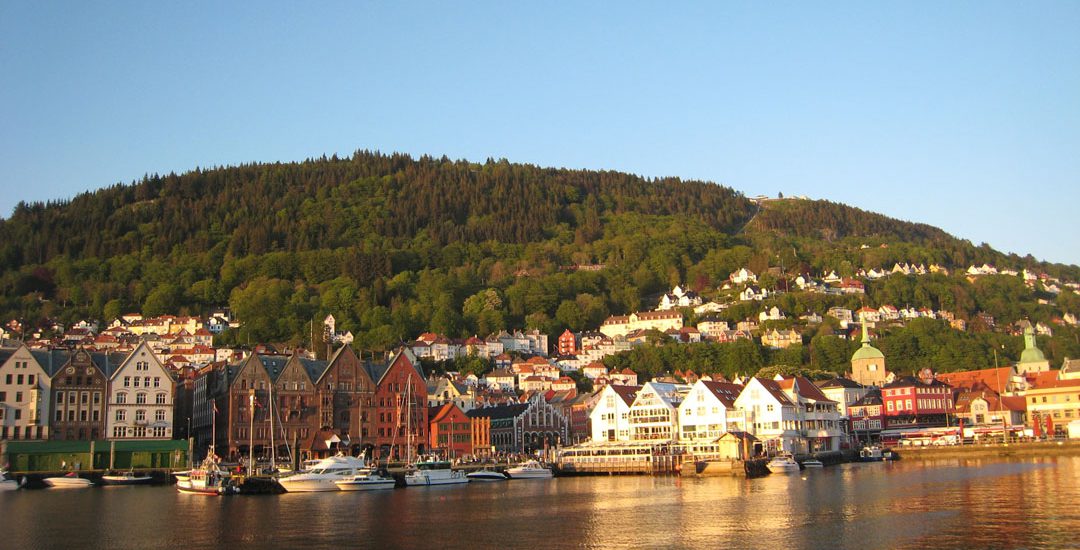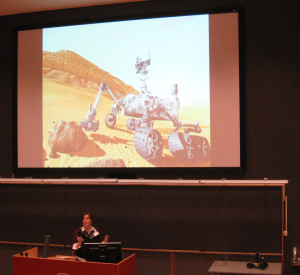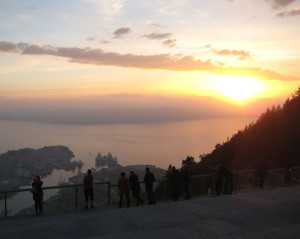
Biosignatures Across Space and Time
Last week, the clouds cleared and nearly 100 scientists from six continents descended on rainy Bergen, Norway to share their perspective on the broad topic of life in the universe. The 2014 joint meeting of the Nordic Network of Astrobiology and the Centre of Geobiology was hosted by the University of Bergen. The science sessions during the three-day meeting addressed the search for biosignatures and the establishment of the bounds of habitability in far-flung corners of the present and ancient universe, and the surface and subsurface of Mars and other objects in our solar system. There were of course many presentations that documented the extent, nature, and remnants of life on our own planet, both in diverse modern habitats and the oldest rocks retained at Earth’s surface.

I was very fortunate to have a broad, interdisciplinary graduate education where meetings and talks of this nature were the norm (thanks in large part to being affiliated with a NASA Astrobiology Institute), but it had been a few years since I had been at a small conference with ample opportunities to hear the perspectives of diverse scientists. I have to admit that some of the sessions I enjoyed the most were those farthest from my own field. The first day had a line up of great talks targeted toward a broad audience. I knew that the Kepler telescope has been quite busy finding exoplanets, but now I know how other telescopes do the detailed work of figuring out the atmospheric composition of these planets, and why it is painstaking work!
One of my favorite parts of meetings now that I’ve got a few years of postdoc experience under my belt is talking with students. Whether casually during a coffee break or at a poster, it is fascinating to see the different ways in which students are defining their projects, and branding work that may have started as their advisor’s idea with their own intellectual contributions. Plus, with students it’s generally safe to ask basic questions that form the basis of their work, without getting a bored response, which happens occasionally with more “seasoned” scientists at larger meetings. From the work that I saw presented, we should be expecting some quality publications in the near future evaluating the biogenicity of microfossils, mats and other morphological features from across geological time with a variety of microscopic, isotopic, and spectroscopic tools.
A great aspect of the Biosignatures meeting was the density of well-established and successful scientists that showed up. With ample social activities, including coffee breaks, daily lunches, poster sessions, a geological walk through the city, and the conference dinner, there was plenty of opportunity for us early career scientists to forge nascent relationships with some big names our fields. Many of these were people I’d never had a chance to talk to before and some folks who hadn’t previously been on my radar. This is much easier to do than at big meetings where, as one person put it to me this week, “there might be more people you are interested in talking to, but they are diluted in the crowds.”
Of course, one highlight of the conference was the city itself. Bergen cooperated by keeping its notoriously rainy weather at bay during our first day, which many of us ended with drinks at an outdoor brewpub along the harbor. The conference banquet, atop Mount Fløyen overlooking the city, took place after the day’s fog had lifted, allowing us to take some great photos of the city in between the funicular ride up and down, and the delicious reindeer steak we had for dinner. “Skål!” to the organizing committee for an enjoyable and enriching conference.

